Books
Some Strange Inconsistencies In Our National Discourse – Part 3
Hari Ravikumar and Dr R Ganesh
Dec 07, 2015, 11:18 PM | Updated Feb 12, 2016, 05:31 PM IST
Save & read from anywhere!
Bookmark stories for easy access on any device or the Swarajya app.
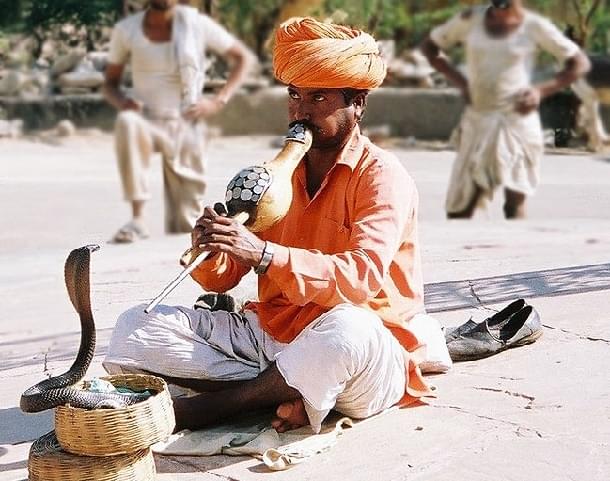
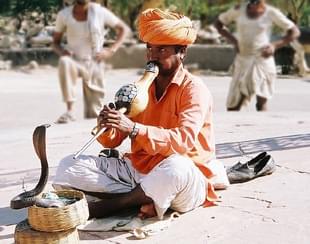
In the previous parts, we discussed the social and political inconsistencies that we see in the Indian public discourse. In the third and final article we delve into the inconsistencies in academia and culture. To read the previous parts of the series head here and here.
1. Indian History and Pseudoscience
Pro-Hindu intellectuals claim that Indian history has been re-written by Marxist historians and Indian history is not as it is presented in our school textbooks. It is true that in a bid to foster Hindu-Muslim unity, Marxist historians misrepresented Indian history by downplaying atrocities committed in India by Islamic invaders and tarnishing the greatness of the traditional Hindu society.[1]
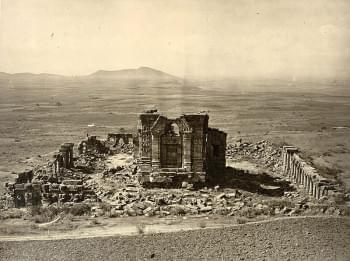
But pro-Hindu thinkers themselves peddle historically inaccurate accounts of science in ancient India – be it the claim of flying machines [2] in the time of the Rāmāyaṇa or the existence of test tube babies in the time of the Mahābhārata [3]. When faced with contrary evidence provided by science or when countered with questions demanding further proof, some of them use a simple escape route: they claim that one should have special vision to understand the true, inner meaning of the traditional works and ordinary mortals like us lack the ability. Some others pull out verses from the scriptures and by means of strained interpretations ascribe a meaning that suits their purpose.
For some years, there was a big deal made out of Sanskrit being the best language for natural language processing and computer programming [4]. In all these years, has anyone produced a workable programming language based on Sanskrit? And if they have, has it been shown to be better than the existing ones? Whether or not computers have benefitted from Sanskrit, the Sanskrit language has immensely benefitted from computers and the internet! Instead, people interested in Sanskrit can engage better with the language – read the classics; appreciate the grammatical structure, wide-ranging vocabulary, and immense word building power; and use the language to write poetry or to converse.
There seems to be a mistaken notion among some of the Hindu intellectuals that there needs to be science in an ancient body of knowledge for it to be respected by the world. And they try their best to find science in every inch of our ancient texts. In this fiasco, isn’t it unfortunate that they forget to even mention the true pioneers of science in ancient India like Caraka, Āryabhaṭṭa, Nāgārjuna, and Bhāskara? And it is Suśruta’s pioneering efforts that gave us plastic surgery and not the Puranic story of Gaṇeśa [5].
2. Art and Religion
Some of the artistes and writers are quick to bring to notice the intolerance to blasphemy among ‘right wing fundamentalists’ (possibly in the sole case of Salman Rushdie, they denounced the fatwa against his controversial Satanic Verses). But isn’t it true that any hardcore ideology, in general, is opposed to art?
Fundamentalist Christianity never gave rise to great art. Even the Renaissance was possible only when Europe came out of the iron grip of the church’s hegemony. Radical Islam never gave rise to great art. Quite a few Islamic regimes banned some or all art forms and even went to the extent of destroying existing monuments and works of art. Communism never supported any of the arts except for the sake of propaganda. Even Soviet Russia, which seems to have promoted theatre and classical music, was careful not to let them come in the way of their agenda. There was a latent propaganda in theatre. Music was largely instrumental, which was seen as harmless. Also, several compositions were censored and some prominent composers had to escape from Stalin’s regime.
In some orthodox works of Hinduism, we find a cold response to art; sometimes they also shun it. For example, one of the dicta of Pūrva Mīmāṃsa (one of the six classical schools of Indian philosophy) is “kāvyālāpāṃśca varjayet,” which basically forbids poetry.
However, later commentators denounced this dictum or in some cases, qualified it by saying that it applies only to inferior poetry and not to great poetry [6]. It is noteworthy to mention that this dictum has never come in the way of good art being created in India.
When such is the case, in the modern Indian context, we have to look at the degree of backlash by the different communities towards what they perceive as blasphemous art. While the reaction of ‘right wing fundamentalists’ against M F Husain’s paintings were condemned by many artistes, not much has been said about the backlash by Islamic radicals [7].
Similarly, the mature response by Hindus to blasphemy has never been acknowledged, let alone appreciated. Salman Rushdie’s Satanic Verses as well as Midnight’s Children is potentially offensive to Hinduism and India. Some of the writings of distinguished Kannada writers Kuvempu and Shivaram Karanth are critical of Hinduism. Even some of the great Hindu leaders like Dayananda Saraswati and Vinayak Damodar Savarkar have bitterly criticized some aspects of Hinduism. But none of these writers had any threats to their life from the Hindu community (and many of them are highly respected). On the other hand, Rajiv Gandhi banned Satanic Verses since it offended Muslims and also refused permission to screen Martin Scorsese’s The Last Temptation of the Christ in a bid to appease Christians [8].
Further, when a deeply offensive and factually incorrect work like Wendy Doniger’s The Hindus: An Alternative History [9] was published, the Hindu community legally fought against it, not by issuing a fatwa-like dictate or by threatening the author [10].
3.Form vs. Content
Some sections of orthodox Hindus and pro-Hindu groups focus more on the form of Sanātana Dharma rather than the content, thus giving rise to much hypocrisy. They wax eloquent about the greatness of our ancients and our gods but they are blind to the fact that there is no basic hygiene in temples and surrounding areas, especially given that śauca (cleanliness) has been given an exalted position in our tradition.
It can be argued that if the muzrai department of the State government has control over a certain temple, its maintenance might not be comparable to, say, a Jain temple. But what is to be said about the thousands of temples in our villages that are dying because they have been neglected? And what of temples that are being built in random places in cities without either sanctity or aesthetics, merely serving commercial purposes?
Some of the orthodox Hindus lash out against eating beef. They say that beef-eating is kali varjya (not to be done in the Kali yuga). But they seem to be blind to other aspects that are kali varjya – taking up sanyāsa (renunciation), widow remarriage, inter-caste marriages, yajña (Vedic fire ritual), crossing the sea, etc [11]. The irony is that some of them who protest against people eating beef in India are sanyāsis, or ‘orthodox’ Indians living in the Unites States, which is a major producer of beef!
To support their case, they refer to various mantras from the Vedas and interpret it to suit their purpose by means of wordplay. Even well-meaning Hindus who have deep reverence for our tradition end up with force-fitted interpretations [12]. This not only goes against the time-honoured commentaries but also ignores the living tradition. In order to support their case, they go back to several traditional references and ‘reinterpret’ the verses so as to fit their “no beef in India” theory. How different is this from the distortion done by Marxist historians or the appropriation done by Roberto De Nobili to spread Christianity? And will these people agree with the interpretations of Paravasthu Surya Narayana (who claimed that Vedas speak about Christianity) and Zakir Naik (who claimed that Vedas speak about Islam)?
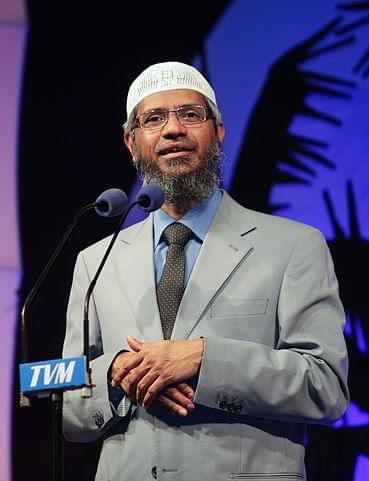
While the demand for a beef ban is totally legitimate on the basis of the ecological imbalance that beef creates, it is factually incorrect to say that there is no evidence of beef-eating in Vedas or that Hinduism is a strictly vegetarian religion. Also, the Hindus who are so vocal about the beef ban have little or nothing to say about the cruelty meted out to cows in the dairy industry.
Further, the orthodoxy invokes the dharmaśātras to strengthen its case in one matter while choose to ignore it in another. For example, they say that being a brāhmaṇa one should do (or not do) such-and-such a thing because it is said so in the dharmaśātras. But it is also said that if a brāhmaṇa touches a piece of iron, he is reduced to the status of a caṇḍāla[13]. Similarly, it is said that a brāhmaṇa should never receive a gift from an unworthy person [14] or a śūdra [15].
It is also said that a brāhmaṇa should not work under anyone for the sake of material gain (or go the worldly way [16]) and neither should he try to attain mastery in anything other than Vedas [17]. Is there a rational basis for the cherry-picking of rules? More than dharmic talking, what we seem to be in great need of is dharmic living.
4.Varṇa and Jāti Outside of Hinduism
Some of our liberals and intellectuals bemoan the existence of varṇa (the traditional division of society based on aptitude and temperament of an individual) and jāti (division of society based on occupation, family reputation, economic status, and birth of an individual) in Hinduism and hail the classless religious systems of Christianity and Islam. While many Hindus converted to these religions for political, social, and economic gains, the liberals claim that it is solely because of the oppression inherent in Hinduism. Yet when it comes to the topic of Dalit Christians and Dalit Muslims – a veritable oxymoron, they claim that irrespective of religion, dalits have been oppressed so they ought to get reservation. How does caste system become specifically a Hindu problem when the ground reality is that most religions in India have upper and lower castes? (Around 90% Buddhists and 30% Sikhs come under Scheduled Castes and around 33% Christians come under Scheduled Tribes [18]). A Roman Catholic Brahmin or a Okkaliga Catholic looks down upon a Dalit Christian just as an upper caste Kṣatriya or Baniya looks down upon a Mahādalit [19]!
While there are no reservations for minorities, some sections of the minorities (around 40% Muslims, 25% Christians, and 22% Sikhs [20]) come under the Other Backward Classes, which means that under specific conditions, they too can avail of the reservations. It is interesting to note here that the list of Scheduled Castes and Scheduled Tribes as laid out in our Constitution was directly taken from the lists prepared by the British. Since then, we have only added to that list, never deleted.
Some Hindu groups advocating ghar wapsi and anti-conversion laws have taken many initiatives in reducing the disparity that arises from caste discrimination in the Hindu society, but many others – notably the ultra-orthodox Hindu NRIs and the traditional maṭhas – are gung-ho about ghar wapsi but have done little to eliminate class discrimination. In fact, some of them even support the existence of caste system. Sadly, they have little or nothing to say about dalit schoolchildren who are forced to clean the toilets in their schools [21].
5. Mythology or History or both?
In recent years, we have had a spate of books inspired by the Rāmāyaṇa, the Mahābhārata, the Purāṇas, and other traditional works. People have re-written these works from the perspectives other than the males and the victors – for example, the Rāmāyaṇa from Sītā’s perspective or from Rāvaṇa’s perspective, the Mahābhārata from Draupadi’s perspective or the Kauravas’ perspective. They claim that it is always the men and the victors who write history so it is legitimate to write their story from other perspectives.
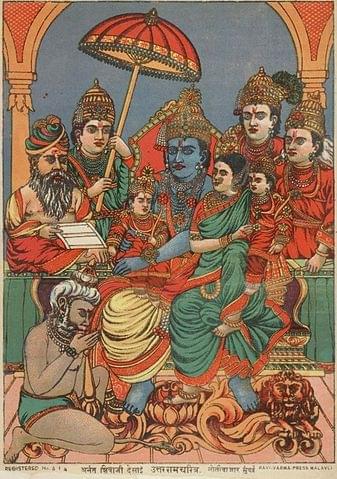
It is unclear, however, on what basis they are writing these alternative histories. Do they have any older works or inscriptions that give a different view? Often, these alternative versions are figments of their imagination. They construct a certain theory (sometimes totally misaligned with the spirit of the original) and force-fit portions of the original into their theory. For example, they will say that Rāvaṇa was an indigenous ‘drāviḍa’ attacked and killed by the ‘āryan’ Rāma. But the Vālmīki Rāmāyaṇa clearly says that Rāvaṇa was the grandson of the sage Paulastya and well-versed in the Vedas. Recent historical studies that show that the distinctions between drāviḍas and āryas are baseless; they are the same people [22]. Such concoctions seem to be neither in tune with the epics nor with history.
On the other hand, if a so-called ‘right wing’ historian tries to write about the role of pro-Hindu leaders in the Independence struggle, then the same people protest against the ‘saffronization’ of history. And what’s more, they also protest against issues like the Ram Mandir in Ayodhya, calling the epics as ‘mythology’ and not to be taken as history – even when there is historical evidence [23]. They say that it’s all poetry and should not be taken seriously!
Conclusion
It is both amusing and appalling to observe these incongruities in modern India and surely this list of fifteen is by no means exhaustive. We will greatly benefit by keenly observing the goings-on in the public sphere, be alert to detect these dichotomies, and be bold enough to call the bluff (but without malice or hatred). One of the possible ways for exposing such hypocrisies is to examine the nature of the discourse – does it deal with specifics and care to give both sides of the argument or does it give a general view that bypasses nuance of every kind? Does the author have compassion and the intention to provide a mutually beneficial solution or does s/he employ dry logic and engage in polemics against a particular group?
It is also true that contradictions lay unresolved, especially in matters of religion, because there is no mechanism available to untangle the knots. Thankfully for us, the eternal tradition of Hinduism gives us an opportunity to raise questions and resolve contradictions as they arise. It has handed down a legacy of asking pertinent questions with empathy to the existing practices, for there is no point in irresponsibly raising questions and being disrespectful. We have an unbroken tradition of internal critics who have been constantly questioning status quo and ushering in changes that are pertinent to their day and place – Kṛṣṇa, Buddha, Yājñavalkya, Kauṭilya, Śaṅkara, Ānandavardhana, Basavaṇṇa, Rāmānuja, Madhva, Kabir, Tukaram, Raja Rammohan Roy, Ishwar Chandra Vidyasagar, Swami Vivekananda, Babasaheb Ambedkar, etc. It is important to note that even these greats have made allowance for future generations to question them and find newer interpretations. This is truly the strength of Hinduism.
Western systems like Christianity, Islam, and Communism do not have this power. One has to entirely buy into their story. Of course, there have been reforms in those systems as well, but neither the reforms are endorsed by the system nor are the reformers venerated by the parent faith [24]. Further, whenever reform has taken place, either the reform movement has been insignificant or the parent faith has been damaged to a great extent.
Sanātana Dharma is a system of living inspired by nature. It takes a natural course (if we let it) and absorbs pertinent changes and embraces diversity. If we hope to resolve these conflicts, we should go back to the spirit of our tradition, or in other words, go back to nature and see what she has to teach us. And lest we get too caught up in learning and teaching and logically tearing apart everything to shreds, we should remember the fundamental truth of the Vedas: Celebrate life and immerse yourself in unbridled happiness.
The authors wish to thank:
- Vikram Phadke, for his painstaking efforts in ensuring that all the law-related references were accurate and for explaining some complicated aspects of the law
- Dr. Koti Sreekrishna, for his detailed feedback on topics related to religion and society
- Aditya Jeurkar, for his invaluable insights on presenting the points in a balanced manner
References-
1. See Arun Shourie’s Eminent Historians: Their Technology, their Line, their Fraud (New Delhi: ASA, 1998) for a detailed exposé. It is striking that nobody till date has been able to write a scholarly refutation of it
2. The much-debated Vaimānika Śāstra (attributed to sage Bharadvāja) is said to have been composed by Pandit Subbaraya Shastry in a trance, sometime during 1918-23. A study by aeronautical and mechanical engineering at the Indian Institute of Science, Bangalore in 1974 showed that the author of the text had no knowledge of aeronautics and his proposed flying machines are not feasible
3. There are many books like Raja Ram Mohan Roy’s Vedic Physics: Scientific Origins of Hinduism (Toronto: Golden Egg Publishing, 1999) that try in vain to look for science in the Vedas and later compositions, which are not scientific works but are largely works of poetry
4. For example, see P Ramanujan’s paperA Case for Sanskrit as Computer Programming Language
5.Those interested in the topic of ancient Indian science must read Prof. Roddam Narasimha’s brilliant guest editorial,The ‘historic’ storm at the Mumbai Science Congress in Current Science, Vol. 108, No. 4, 25 February 2015
6. See for example, the introductory portion of Mallinātha’s commentary on Kālidāsa’s Raghuvaṃśam or Ānandavardhana’s Dhvanyāloka 3.5
7. For example, in December 1986, Bangalore-based newspaper Deccan Herald ran a translation of a Malayalam story called “Mohammad the Idiot” about a village peasant named Mohammad. The DH office was burnt by Muslim protestors and the riots that followed claimed many lives
9. Vishal Agarwal’s articleA Critique of Wendy Doniger’s “The Hindus, an Alternative History”
10. In recent times, even in movies we see negative stereotypes against devout Hindus – the more religious a Hindu character is in a film, the more heartless he will be; on the other hand, the more religious a Muslim character is, the more compassionate he will be. And for some reason, across the board, a Christian priest is always portrayed as a kind-hearted soul. This stereotype exists the other way around too – invariably the hero will be a Hindu character (or sometimes a Sikh) and rarely a Muslim or a Christian.
11. For details, see Kane, Pandurang Vaman. History of Dharmaśātra. Poona: Bhandarkar Oriental Research Institute, 1946. Vol. III, Chapter 34
12. For example, see A Review of Beef in Ancient India. Eds. Dalmia, Jaidayal et al. Gorakhpur: Gita Press, 1971
13. Possibly since Manusmṛti 10.52 says that a caṇḍāla wears ornaments made of iron
14. Bṛhadāraṇyaka Upaniṣad 4.1.3
15. Manusmṛti 1.10
16. Manusmṛti 4.11
17. Manusmṛti 2.168
18. See-http://en.wikipedia.org/wiki/Scheduled_Castes_and_Scheduled_Tribes#Religious_population_of_SCs.2FSTs
19. See Sudipto Mondal’s articleDalit Catholics continue to battle upper caste aggression
20. See-http://en.wikipedia.org/wiki/Scheduled_Castes_and_Scheduled_Tribes#Religious_population_of_SCs.2FSTs
21. See P Sudhakar’s articleTeachers held for forcing Dalit students to clean toilets
22. There is a huge body of work in this area by many scholars. One can refer to the writings of K D Sethna, Shrikant Talageri, N S Rajaram, David Frawley, et al.
23. The eminent epigraphist K V Ramesh recalls in an interview (Śāsana Adhyayana – Journal of Epigraphy, Kannada University, Hampi. July-December 2006. p. 158) that the same evening the Babri Masjid was demolished, he was called to examine an inscription that showed beyond doubt that a Viṣṇu temple existed at that site and it was destroyed during the 12th century and a mosque was built there instead. An estimated 2,000 mosques in India have been built over demolished temples (see Goel, Sita Ram et. al. Hindu Temples: What Happened to Them. New Delhi: Voice of India, 1990. Vol. 1)
24. It is very easy for a Hindu to accept Buddha or Mahāvīra as an internal critic and venerate them, or for an advaitin to venerate Rāmānuja or Madhva but it is unlikely that the Vatican will revere Martin Luther or the ulema speak highly of Bahá’u’lláh.





